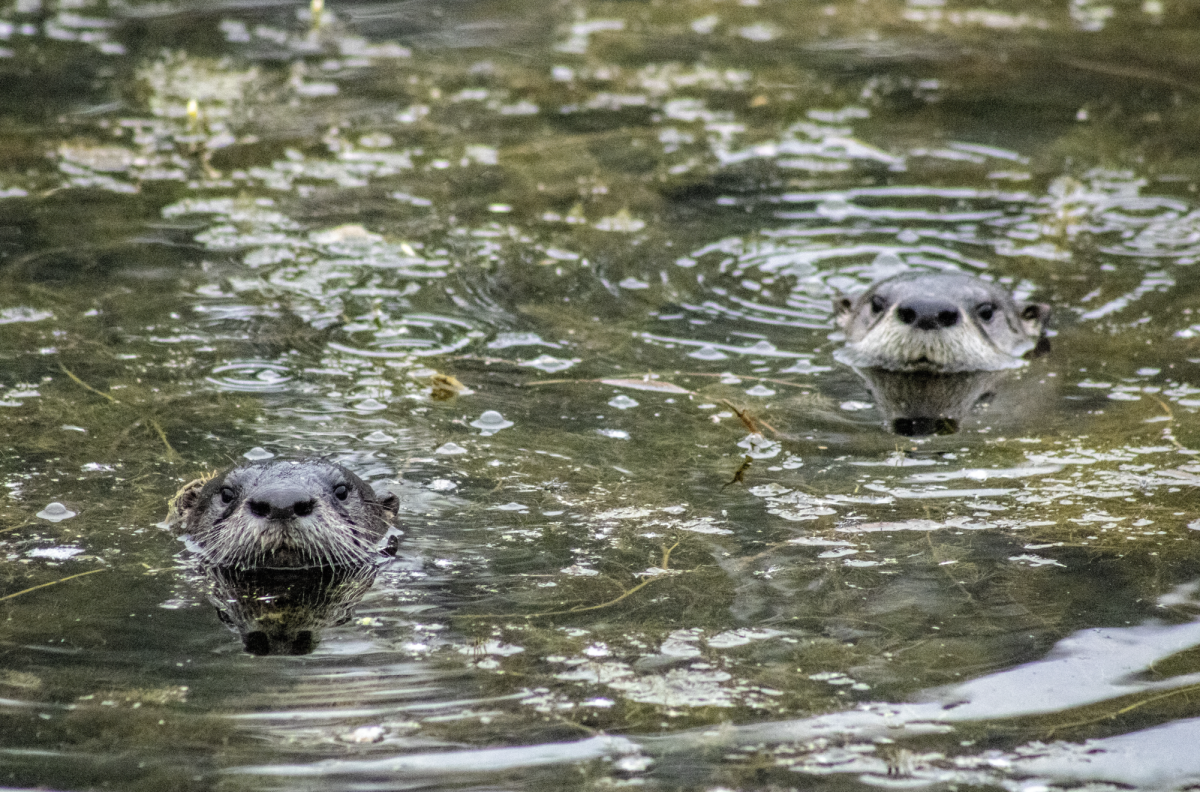Temperatures are rising and students are heading to the San Marcos River where they might swim alongside North American River Otters for the first time in 70 years.
According to Sam Massey, glass bottom boat manager at The Meadows Center, there have not been sightings of the river otter in San Marcos since the 1950s. It wasn’t until 2021 that otters were seen again when students walking along the river boardwalk came across one and told Massey about their discovery. Now, The Meadows Center has found four North American River Otters since, with the last spotting in February.
“[Otters] have been seen sporadically up and down the whole stretch of the upper river, from Spring Lake to where the Blanco River intersects with the San Marcos River,” Massey said.
Ivan Castro-Arellano, associate professor in biology, said the river otters are an indication the river is in healthy shape as they thrive in unpolluted waters.
According to Castro-Arellano, river otters are also an indicator species, a species whose presence, absence or abundance in an environment serves as a sign of the overall health or condition of that ecosystem.
“It’s a good indication the ecosystem is working well, our river is in good health and there is enough amount of fish and prey for [otters] to live in the area,” Castro-Arellano said.
Massey said the positive state of the river is attributed to the city’s Edwards Aquifer Habitat Conservation Plan (HCP).
The HCP safeguards endangered species in the San Marcos and Comal rivers by removing invasive species and enhancing the habitat with native plants.
“The [HCP] had a positive impact on the aquatic ecosystem and because of that it is remarkable that we have river otters in an urban area like [San Marcos],” Massey said. “Especially with the drought, I would think that would decrease the chance of seeing otters here but there has been enough habitat corridor that is worked on so the otters are able to make it up here.”
Executive Director of the San Marcos River Foundation Virginia Parker said it is important to maintain conservation efforts, such as that of HCP, for the species to thrive.
“Anything we can do to improve water quality, to improve the habitat for all the things the otters eat is needed … and as the population in San Marcos increases it’s natural there is going to be more trash but a lot of people work hard to make sure the invasive species are being removed and the endangered species are protected,” Parker said.
Massey said since otters feed on fish, it is important to ensure the fish lives in waterways free of chemicals and heavy metals to avoid the species getting mercury poisoning.
Before coming to San Marcos, the North American River Otters were found in southern and north-central Texas. However, according to Castro-Arellano, a contributing factor to the resurgence of otters since the fifties is the species is no longer hunted for its pelt like it used to be.
“With the restoration efforts and I can’t guess about climate, future droughts or aquifer usage … we might be looking at a future where the river otter does become a more known species up here and then we would be able to conduct studies on it,” Massey said.
Massey urged river-goers to help conserve this new species by making sure their dogs don’t attack the otters since they sleep during the day in bushes and grasses.
“It’s simple; don’t dump your trash in the river, stay on marked pathways, don’t try to make your own river access point, keep your dogs on the leash and don’t let them go into bushes where you can’t see them,” Massey said.





























